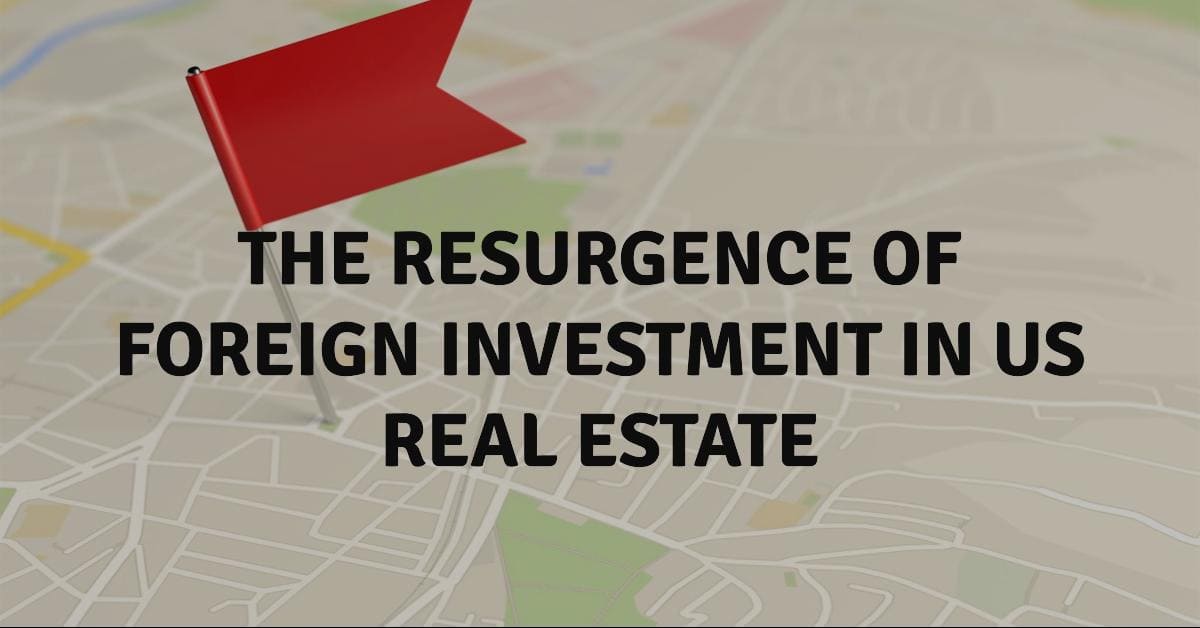The landscape of U.S. real estate is experiencing a significant shift as foreign investors return with renewed interest. After a period of decline during the height of the pandemic, the latter half of 2021 marked a turning point with a substantial increase in foreign capital inflow. This resurgence is not just a rebound but a reconfiguration of investment patterns and preferences.
In 2021, nearly $809 billion was invested into U.S. commercial properties, surpassing the previous year by over 80% and setting a new record high. This surge in investment activity reflects a growing optimism around income growth and the stable yields offered by the U.S. real estate sector. Despite broader economic concerns, the sector has regained its appeal among investors, particularly domestic ones.
However, the story for foreign investors unfolded differently. Their presence in the U.S. real estate market had dwindled to as low as 7% of total deal activity during the pandemic, a stark contrast to the pre-pandemic years where they accounted for up to 20% of the investment activity. The lifting of travel restrictions and the rollout of vaccines in the second half of 2021 saw a $53 billion increase in foreign investment, signaling a strong comeback.
The trend continued into 2022, with foreign buyers purchasing $59 billion worth of U.S. existing homes, an 8.5% increase from the previous year. This growth ended a three-year decline in foreign investment in U.S. residential real estate and highlighted the enduring attractiveness of the U.S. market.
The shift in investment patterns is also evident in the types of properties and locations being targeted. Foreign investors are now looking beyond traditional hotspots and exploring suburban areas and detached single-family homes. This change in preference could be attributed to the evolving lifestyle and work patterns post-pandemic.
Moreover, the commercial real estate market saw a 49% increase in foreign investor acquisitions in 2021, with an estimated $57.7 billion invested. This recovery has been broad-based, with apartment buildings and land attracting the strongest interest.
The growing demand for U.S. real estate by foreign investors is reshaping the market and creating new opportunities. Mortgage brokers and financial advisors are capitalizing on this trend, offering specialized services to cater to the unique needs of international clients. As the U.S. real estate market continues to evolve, it remains a pivotal arena for global investment, promising stability and growth in a world still navigating the aftermath of a global crisis.
The Growing Demand for US Real Estate by Foreign Investors
Last year, we observed a significant trend: the growing demand for U.S. real estate by foreign investors. Despite a challenging global economic climate, the United States has remained a beacon for real estate investment, offering stability and potential for appreciation.
A midyear review by CBRE highlighted a resilient economy and persistent inflation, which delayed the forecasted recession, thereby extending the recovery in commercial real estate investment volume into 2024. This resilience has been attractive to foreign investors looking for secure investment opportunities amidst global uncertainty.
The Federal Reserve Bank of Boston‘s research shed light on the underappreciated impacts of foreign investment, particularly from Chinese buyers in the California real estate market. The influx, tied to the loosening of China's capital controls, has had substantial local economic effects, including increased employment and property values, albeit with the displacement of lower-income residents.
Savills Impacts‘ 2023 outlook suggested that with economic forecasts for the U.S. being more optimistic than those for Europe and Asia, foreign investors are expected to become more active in the region. This aligns with the observed 6% increase in foreign purchases of U.S. real estate, indicating a growing interest in real estate investment for various purposes.
However, it's not all upward trends. The increase in U.S. interest rates, which rose significantly in 2023, has led to a decrease in the amount of money foreign nationals spent on U.S. real estate compared to 2022. This indicates that while interest remains, the cost of capital is a significant factor influencing investment decisions.
In conclusion, the U.S. real estate has been a landscape of contrasts. On one hand, there's a growing demand from foreign investors, driven by the search for stable and profitable investment opportunities. On the other, economic policies and interest rates have tempered this demand, reminding us that the real estate market is sensitive to a multitude of global and domestic factors.
As we look towards the future, it's clear that the U.S. will continue to be a key player in the global real estate market, with foreign investment playing a significant role in shaping its trajectory. For more detailed insights and the full reports, you can visit the respective sources.





